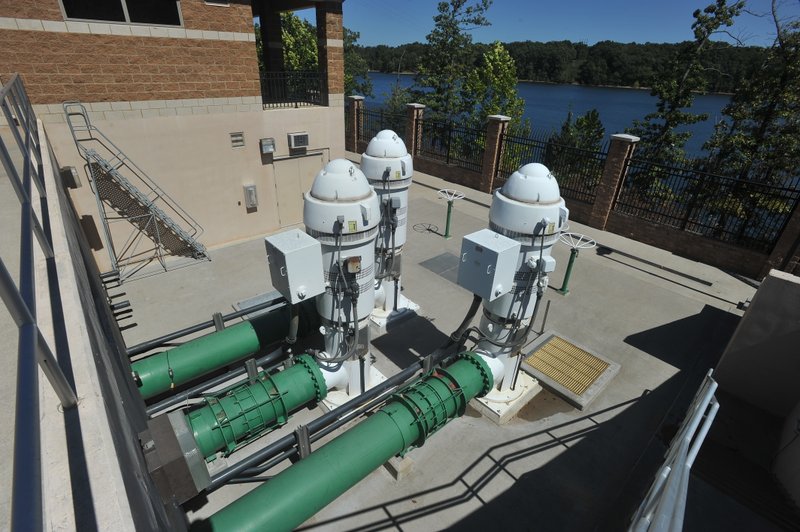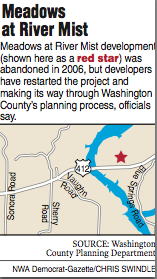LOWELL — The Beaver Water District will oppose a 125-lot subdivision being considered for approval by the Washington County Planning Department, the district’s board decided at its monthly meeting Thursday.
The proposed Meadows at River Mist development would put a private sewage treatment plant 1,500 feet from Beaver Lake, the region’s main source of drinking water. The project’s developers are seeking approval from the Washington County Planning Board, which next meets June 1.
Allowing the development with treatment would improve water quality, not degrade it, Tom Bartlett of NWA Utility Services said. Bartlett’s company would operate the development plant when built, he said. Overall subdivision project engineer Charles Presley referred questions about the treatment plant proposal to Bartlett.
“This is not about water quality. This is about the Beaver District not wanting development near the lake,” Bartlett said. The 65-acre development site has a road into it built in 2006, shortly before development stopped during a severe downturn in the housing market, he said. It has since become a dumping ground with runoff into the lake, he said.
Under existing zoning, the land could be developed with up to 54 homes or so, all with septic tanks, Bartlett said. A home with a fully functioning septic tank in good repair would release 20 times more contaminants into the lake than it would if connected to the system being proposed, he said.
The prospective subdivision’s site is on the north side of the U.S. 412, east of a bridge where the highway crosses part of the southernmost branch of the lake. The water district is a nonprofit regional supplier of drinking water.
The board’s concern, as members expressed at the meeting, is other, privately owned systems around the state have had a very mixed record. These systems work well when first set up when they are properly installed, but are expensive to maintain. If something goes badly wrong, they are very expensive to repair, said Beaver District chief executive Alan Fortenberry. Allowing a dense development with its own, small treatment plant would be a bad precedent even if this particular system lived up to its claims, board members said.
Problems with other private systems lead to Act 987 of 2017, Fortenberry and others said at the meeting. The act passed by the Legislature increased the amount privately owned systems have to pay into a staterun trust fund to take care of contingencies. A provision of the bill that takes effect Jan. 1 would prohibit homeowner associations and property owners associations from getting a new permit to build such a system, since such associations rarely have the financial resources needed to sustain such a system over the long term, staff members of the district said.
That provision of the bill wouldn’t affect the Meadows project because the wastewater system would be owned by a limited liability corporation, said Kathy Bartlett, wife and business partner of Tom Bartlett.
In other matters, the board approved a 3-centper-thousand-gallon rate increase abiding by a schedule set in 2015 to phase in such increases. The measure will raise rates beginning in October from $1.31 per 1,000 gallons to $1.34.
The district board also briefly discussed the decision by Fayetteville to allow the University of Arkansas to dispose of 70,000 gallons of seepage from a building that used to house a small, experimental nuclear reactor into the city’s wastewater system. That system discharges treated water into the White River and ultimately Beaver Lake.
The amount of radioactive material involved is minute and the radiation levels found in it by testing are less than the naturally occurring levels found in water from some wells in the region, staff told the board. This discharge of seepage is a one-time event, not a continuing thing, Fortenberry said. The volume of water in the river and lake will dilute this single discharge, Fortenberry said.
“Dilution is not always the solution to pollution, but in this case it is,” Fortenberry told the board.
Doug Thompson can be reached by email at dthompson@nwadg. com or on Twitter @NWADoug.

